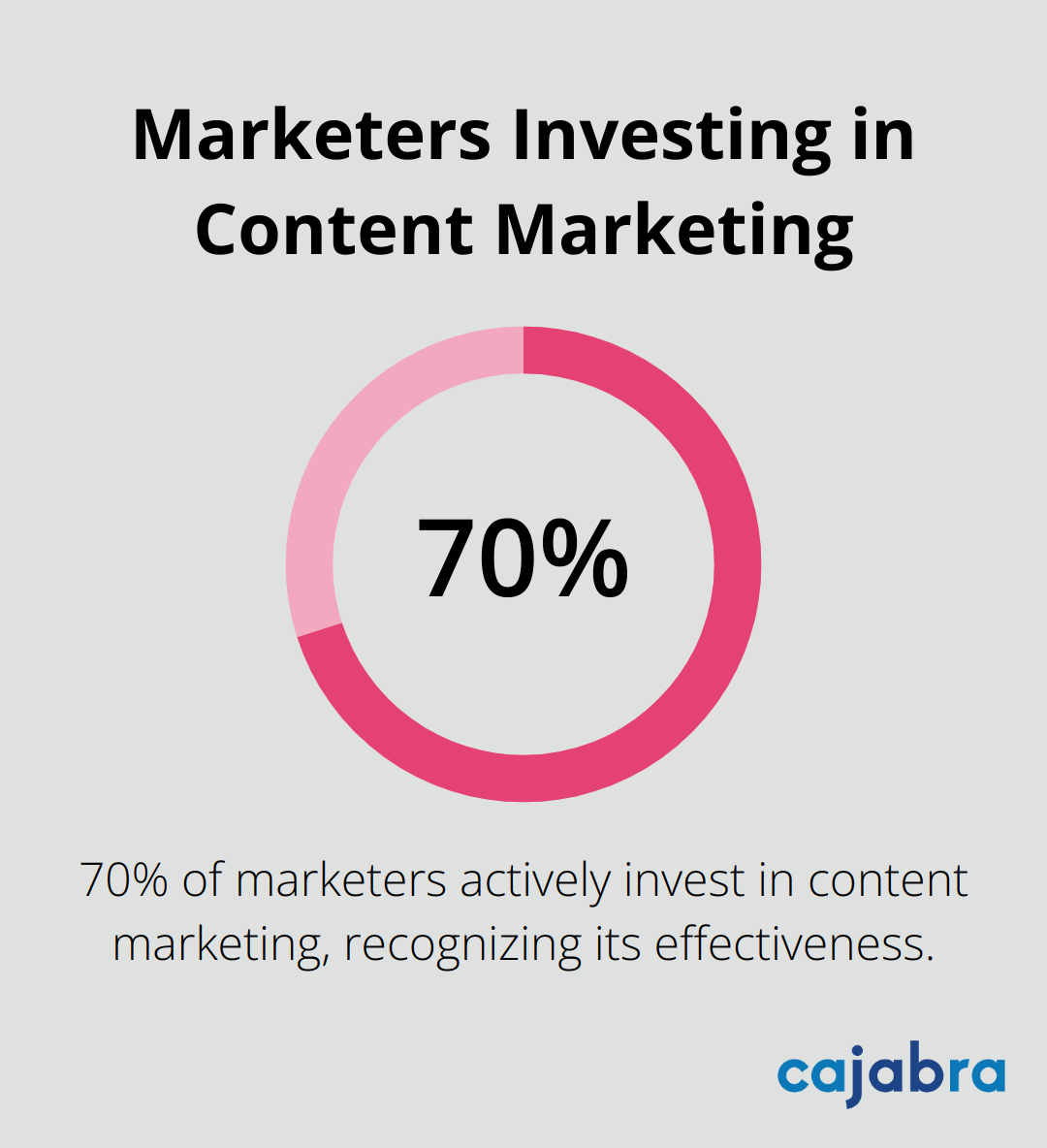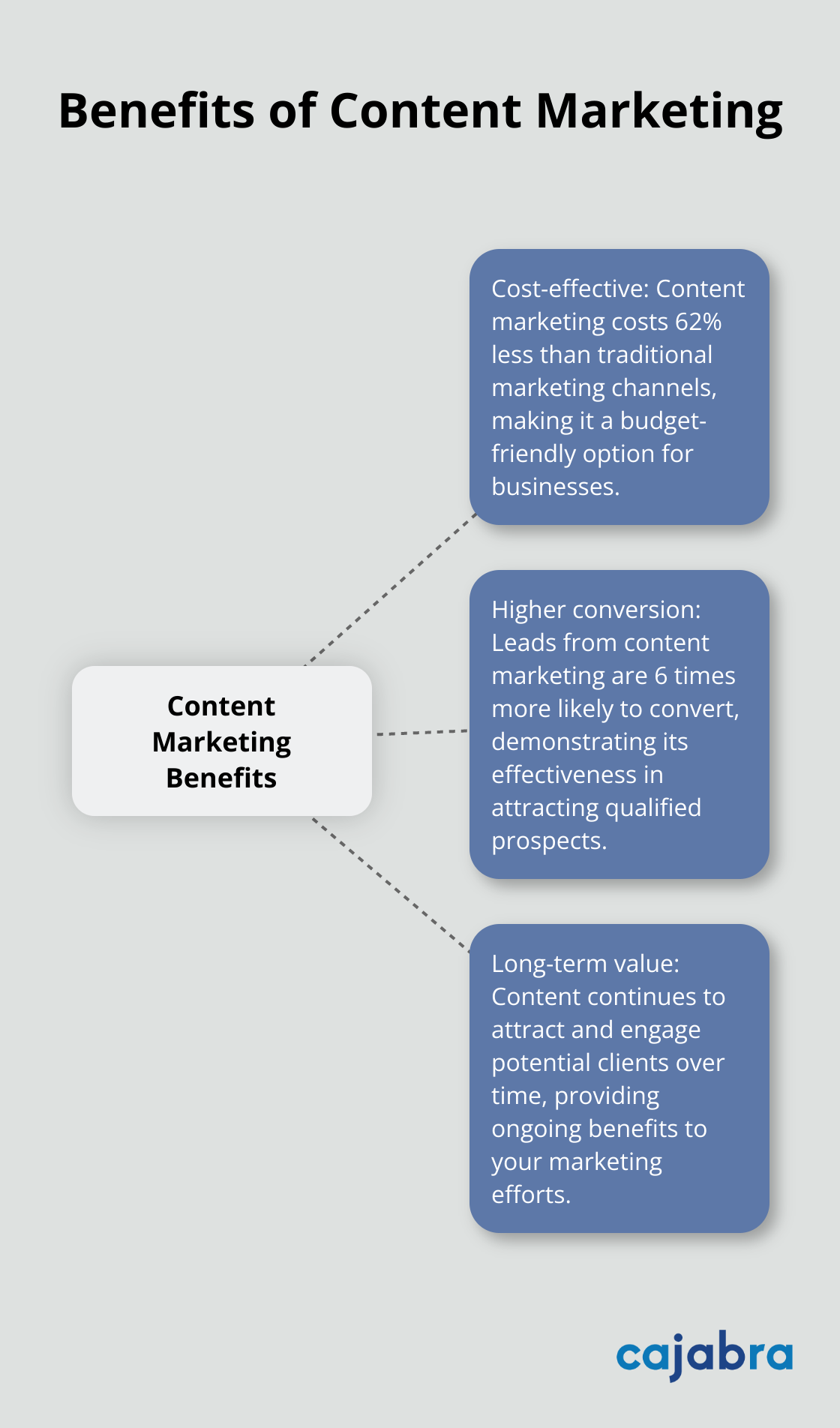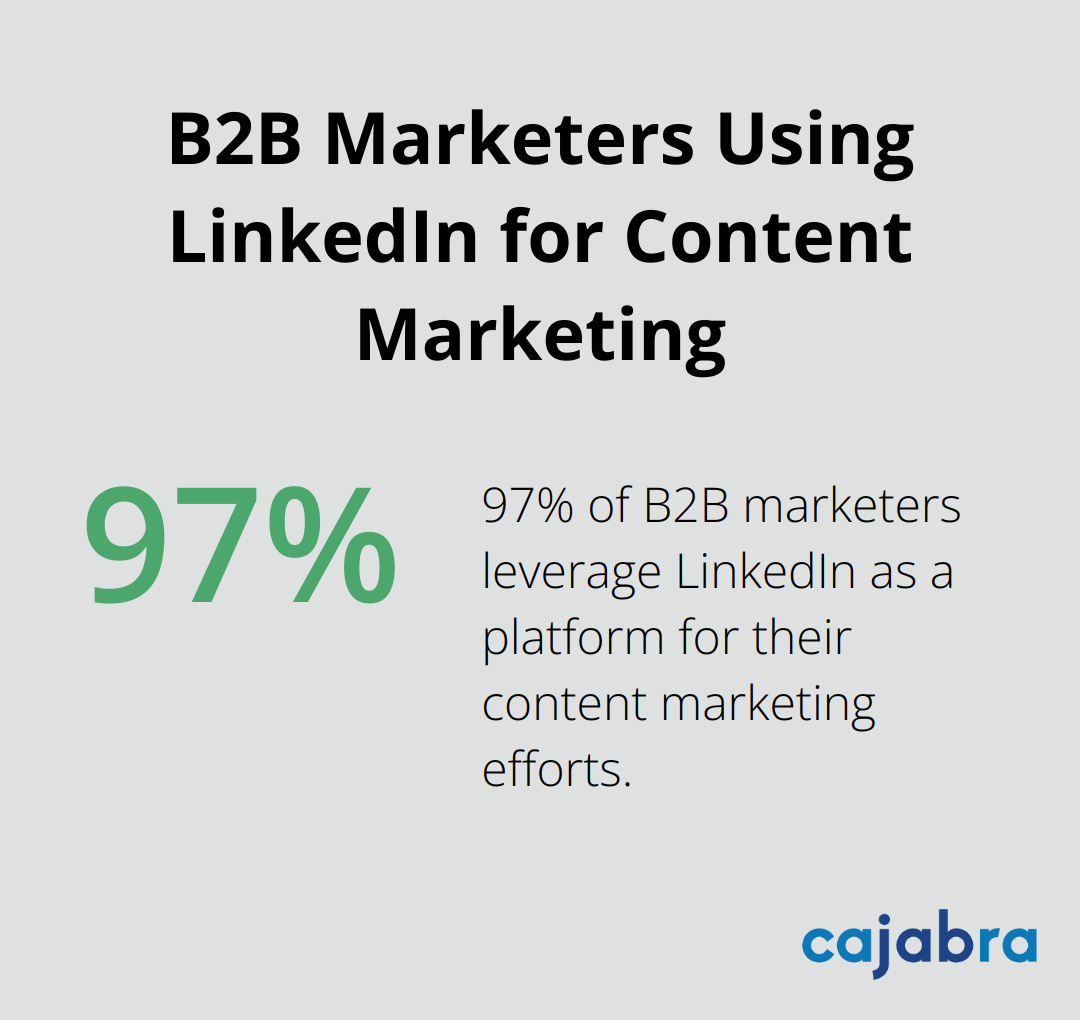
Inbound content marketing has revolutionized how businesses attract and engage customers. At Cajabra, LLC, we've seen firsthand the power of this approach in driving growth and building lasting relationships with clients.
In this post, we'll explore the key strategies for creating effective inbound content marketing campaigns. We'll cover everything from developing a solid content strategy to producing and distributing high-quality content that resonates with your target audience.
Inbound content marketing represents a strategic method that creates valuable, relevant content to attract and engage a specific audience. This approach draws potential customers to your business by providing information they actively seek, rather than interrupting them with traditional advertising.
Unlike outbound marketing (which pushes messages to a broad audience), inbound content marketing pulls interested prospects towards your business. This strategy aims to attract customers by providing valuable and relevant content or experiences, aligning perfectly with modern consumer behavior, where people research solutions online before making purchasing decisions. HubSpot reports that 70% of marketers actively invest in content marketing, recognizing its effectiveness in reaching and converting leads.

For accounting firms, inbound content marketing offers distinct advantages. The creation of content that addresses common financial concerns, tax issues, and business challenges allows firms to position themselves as trusted advisors. This approach not only attracts potential clients but also builds credibility and authority in the field.
The effectiveness of inbound content marketing manifests in the numbers. Content marketing costs 62% less than traditional marketing channels, and these leads are 6 times as likely to convert. For accounting firms, this translates to a more cost-effective way of attracting high-quality clients who already express interest in their services.
One of the most significant benefits of inbound content marketing for accounting firms lies in its ability to foster long-term relationships. Consistent provision of valuable insights and information keeps firms top-of-mind with clients and prospects. This ongoing engagement often results in higher client retention rates and more referrals.
Now that we understand the power of inbound content marketing, the next logical step involves the creation of a robust content strategy. This strategy will serve as the foundation for all your inbound marketing efforts, ensuring that your content resonates with your target audience and achieves your business goals.
The first step in building a content strategy requires understanding your target audience. Conduct thorough research to identify their pain points, interests, and behaviors. Use tools like Google Analytics, social media insights, and customer surveys to gather data. Create detailed buyer personas that represent your ideal clients. For accounting firms, this might include small business owners, CFOs of mid-sized companies, or high-net-worth individuals seeking tax advice.
Your content strategy needs clear, measurable objectives. Set SMART goals (Specific, Measurable, Achievable, Relevant, Time-bound) that align with your overall business objectives. For example, reconcile accounts within five days of month-end. Choose relevant Key Performance Indicators (KPIs) to track progress. These might include website traffic, engagement rates, lead generation numbers, or conversion rates. Tools like Google Analytics and HubSpot can help you monitor these metrics effectively.

Develop a content calendar that outlines what you'll publish, when, and where. This helps maintain consistency and ensures you cover all relevant topics for your audience. Use tools like Trello or Asana to manage your content pipeline. Plan content themes around key dates in the accounting calendar (such as tax season or end-of-financial-year reporting). Mix up your content formats to keep things fresh and engage different segments of your audience. Blog posts, infographics, videos, and podcasts can all play a role in a well-rounded content strategy.
The most effective content strategies remain flexible. Regularly review your performance against your KPIs and adjust your approach based on what the data tells you. This iterative process allows you to refine your strategy over time, ensuring it continues to deliver results.
With a solid strategy in place, you're well-positioned to create content that resonates with your audience and drives real business results. The next step involves producing and distributing high-quality content that aligns with your strategy and engages your target audience effectively.
The foundation of successful inbound marketing rests on creating and distributing quality content. To write engaging blog posts, address your audience's pain points. For accounting firms, this includes topics like tax law changes, financial planning strategies, or business growth tips. Use a conversational tone and structure your text with subheadings, bullet points, and images to enhance readability.
A study by Orbit Media reveals that bloggers who dedicate 6+ hours to a post are 56% more likely to report strong results. Invest time in research, writing, and editing to ensure your content provides genuine value.
Lead magnets are powerful tools to capture potential clients' contact information. Effective lead magnets for accounting firms should offer unique insights, practical tips, or actionable strategies that address the pain points of your target audience.
HubSpot reports that 50% of marketers who use lead magnets see higher conversion rates. When you create lead magnets, focus on solving a specific problem for your target audience. For example, a guide on "10 Tax Deductions Small Business Owners Often Miss" can attract potential clients effectively.
Social media platforms offer excellent opportunities to distribute content and engage with your audience. LinkedIn proves particularly effective for B2B marketing, with 97% of B2B marketers using LinkedIn for content marketing.

Post consistently and vary your content types. Share blog post snippets, industry news, and behind-the-scenes glimpses of your firm. Engage with your followers by responding to comments and participating in relevant discussions.
Search Engine Optimization (SEO) ensures your content reaches your target audience. Focus on long-tail keywords relevant to your accounting niche. For instance, "small business tax planning strategies" is more specific and likely to attract qualified leads than just "tax planning."
Use tools like SEMrush or Ahrefs to identify keyword opportunities. Incorporate these keywords naturally into your content, meta descriptions, and headers. Google's algorithm prioritizes content that provides value to users, so focus on quality first.
Email marketing remains one of the most effective ways to nurture leads. Segment your email list based on factors like business size, industry, or stage in the buying process. This allows you to send targeted, relevant content to each group.
Campaign Monitor reports that segmented email campaigns can lead to a 760% increase in revenue. For accounting firms, this could mean sending tax preparation tips to small business owners in January or financial year-end planning advice to CFOs in May.
Inbound content marketing empowers accounting firms to attract and convert potential clients effectively. This strategy positions firms as trusted advisors by addressing specific needs and pain points of target audiences. Success hinges on a comprehensive content strategy, consistent high-quality production, and effective distribution across various channels.
Inbound content marketing requires patience and persistence, but yields significant long-term benefits. We at Cajabra specialize in helping accounting firms harness this powerful approach. Our JAB System™ moves accountants from overlooked to overbooked in 90 days by securing retainer-based clients.
Implement inbound content marketing strategies today to transform your accounting firm into a magnet for high-quality, long-term clients. With the right approach, you can establish your firm as a go-to resource in the accounting industry, driving sustainable growth and success for years to come.



